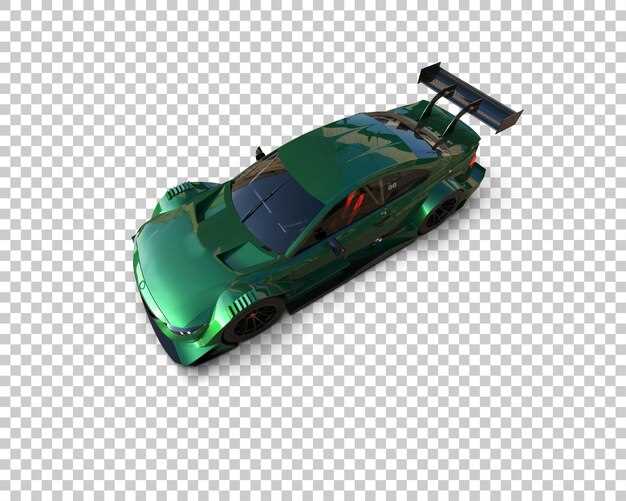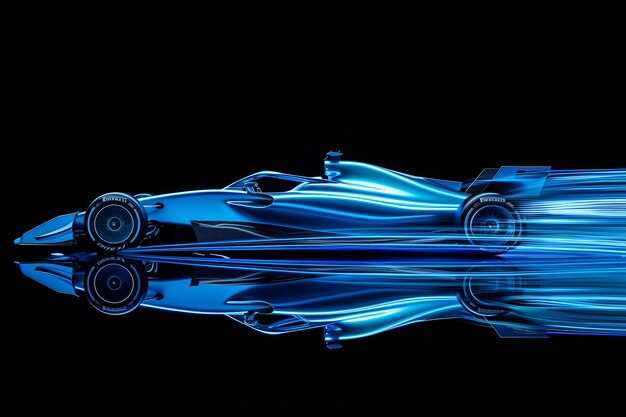
Aerodynamics plays a critical role in the performance of race cars, significantly impacting their speed, handling, and overall competitiveness on the track. One of the key aerodynamic principles that engineers prioritize is downforce. This force is generated by the car’s design, enabling it to push down on the track, thereby enhancing traction and stability during high-speed maneuvers.
When a race car moves at high velocities, the shape and configuration of its bodywork become essential. A well-designed car will channel air efficiently, creating a balance between downforce and drag. Effective aerodynamic features, such as wings, spoilers, and diffusers, are meticulously engineered to maximize downforce while minimizing resistance, allowing drivers to maintain higher cornering speeds and improved handling characteristics.
As racing technology continues to evolve, teams invest heavily in aerodynamic testing and simulation to refine their designs. Understanding how airflow interacts with various components of the car not only helps in generating optimal downforce but also assists in tire management and fuel efficiency, which are crucial in competitive racing environments. Thus, the influence of aerodynamics on race car performance cannot be overstated, as it directly correlates with a team’s success on the track.
Understanding Downforce: How It Affects Cornering Speed

Downforce is a crucial aerodynamic force that plays a significant role in enhancing a race car’s cornering speed. When a car travels at high speeds, its shape generates a pressure difference between the upper and lower surfaces, resulting in a downward force. This effect is vital for maintaining tire contact with the track, allowing for improved traction and stability during sharp turns.
As a car navigates a corner, the need for optimal tire grip becomes paramount. Increased downforce generates greater vertical load on the tires, enhancing their adhesion to the asphalt. This increased contact provides drivers with the confidence to take corners at higher speeds without losing control. A well-balanced aerodynamic design can make a substantial difference in a vehicle’s performance during racing.
Moreover, the distribution of downforce across the car’s body affects cornering dynamics. A car with excessive front downforce may experience understeer, where the front tires lose grip before the rear tires. Conversely, too much rear downforce can lead to oversteer, making the car unsteady. Achieving the right balance between front and rear downforce is essential for maximizing cornering performance and achieving optimal lap times.
In addition to balance, the ability to adjust downforce through aerodynamic components, such as wings and diffusers, allows teams to tailor their setups to specific track conditions. Higher downforce configurations are beneficial on twisty circuits, while lower downforce settings might be advantageous on fast, open tracks. Thus, understanding the implications of downforce is critical for engineers and drivers alike, as it directly influences speed and maneuverability in corners.
In conclusion, downforce is an integral part of a race car’s aerodynamics that significantly impacts cornering speed. The ability to generate and manage downforce not only enhances tire grip but also contributes to overall handling and performance, making it a key factor in competitive racing scenarios.
Designing Aerodynamic Features: Wings, Diffusers, and Their Impact
Aerodynamics plays a crucial role in the performance of race cars, where every design element must enhance speed and handling. Wings and diffusers are two of the most significant aerodynamic features that influence a vehicle’s dynamics on the track.
Wings are designed to generate downforce, which increases tire grip by pushing the car into the road surface during high-speed maneuvers. The shape, angle, and size of the wing must be carefully calibrated to maintain an optimal balance between downforce and drag. A well-designed rear wing can significantly improve cornering speeds, allowing drivers to take turns with more precision. Conversely, an improperly designed wing may create excessive drag, hindering acceleration and top speed.
Diffusers work by managing airflow underneath the car. By accelerating air as it exits the back of the vehicle, diffusers create a low-pressure area that further enhances downforce without a significant increase in drag. The design of the diffuser must account for the car’s overall shape and suspension setup to maximize its efficiency. Effective diffusers improve stability at high speeds and reduce lift, especially in fast corners.
The integration of wings and diffusers must be harmonized with other aerodynamic features, such as front splitters and canards, to ensure a balanced aerodynamic profile. Adjustments in one area can affect the overall airflow dynamics around the car. Designers utilize computational fluid dynamics (CFD) simulations and wind tunnel testing to refine these components and achieve optimal performance.
In conclusion, the thoughtful design of aerodynamic features like wings and diffusers is essential for maximizing race car performance. By enhancing downforce while minimizing drag, these elements contribute significantly to a vehicle’s speed, handling, and overall competitiveness on the racetrack.
Testing Aerodynamic Modifications: Wind Tunnel and CFD Analysis

Aerodynamics plays a crucial role in the overall performance of race cars, influencing both speed and handling. To evaluate the effectiveness of aerodynamic modifications, two primary testing methods are utilized: wind tunnel testing and Computational Fluid Dynamics (CFD) analysis.
Wind tunnel testing involves placing a scale model of the race car in a controlled environment where airflow can be manipulated. By simulating racing conditions, engineers can examine how changes in design affect drag, downforce, and airflow separation. This method provides tangible data on aerodynamic performance, allowing for precise adjustments to be made to the car’s shape and components. Engineers utilize various instrumentation to measure forces acting on the model, ensuring that all relevant aerodynamic parameters are thoroughly analyzed.
On the other hand, Computational Fluid Dynamics (CFD) is a powerful tool that leverages computer simulations to analyze fluid flow around the race car. By using complex algorithms that solve the equations of fluid dynamics, CFD allows for a detailed understanding of airflow patterns without the need for physical prototypes. This method offers the flexibility to test multiple design iterations quickly, significantly reducing development time. With advancements in computing power, CFD has become an essential part of the aerodynamic design process, enabling engineers to visualize the effects of modifications in real-time.
Combining wind tunnel testing and CFD analysis provides a comprehensive approach to validate aerodynamic modifications. While wind tunnel tests offer empirical data, CFD provides insights into flow dynamics that might be difficult to capture in a physical setting. Together, these methods enhance the design and optimization of race car aerodynamics, ultimately leading to improved performance on the track.











